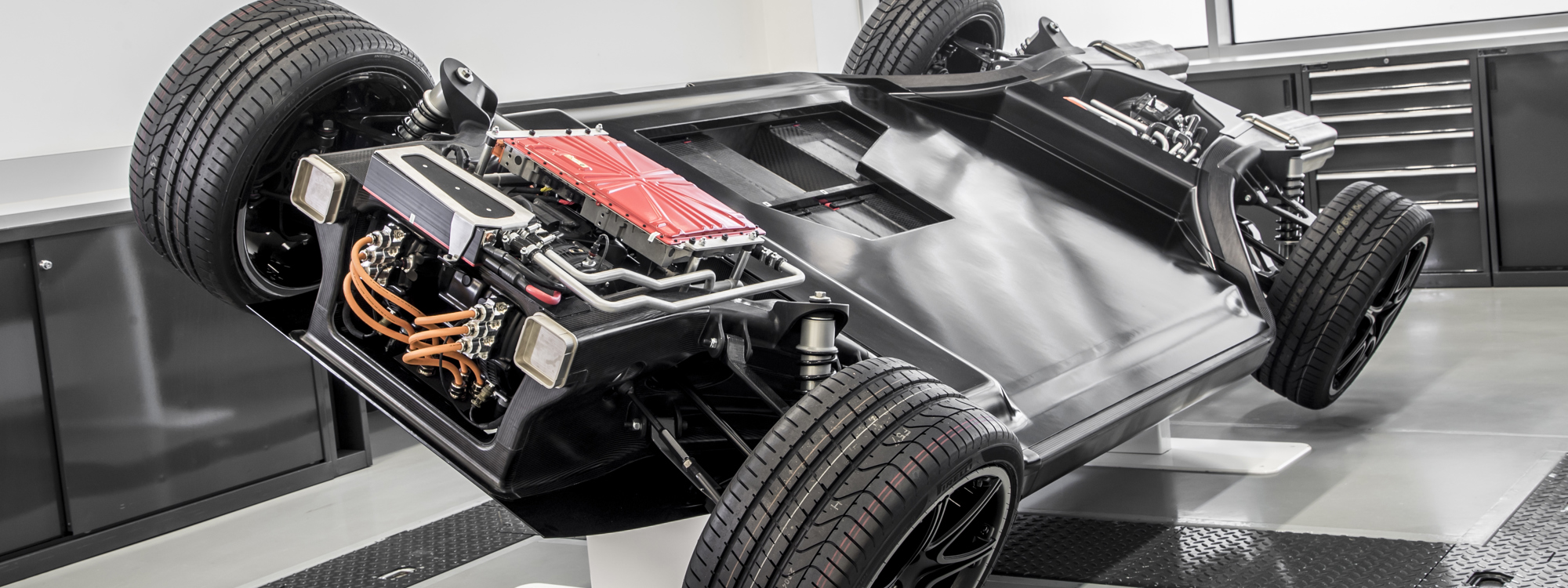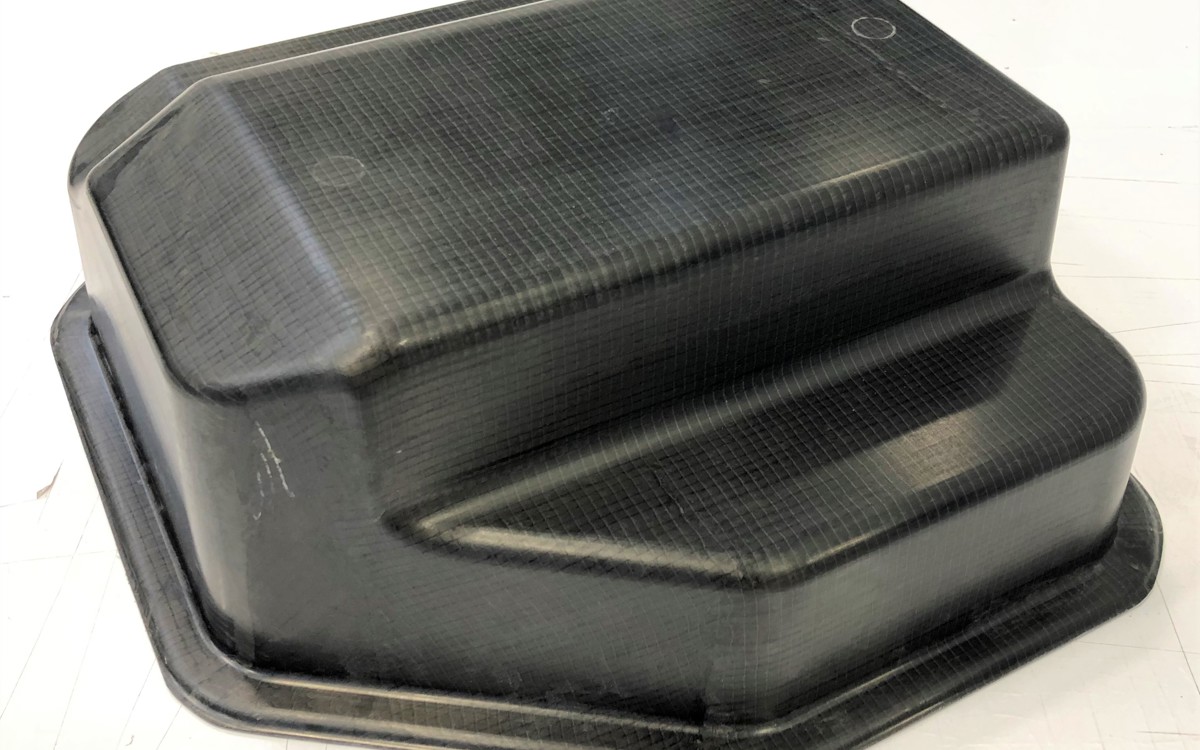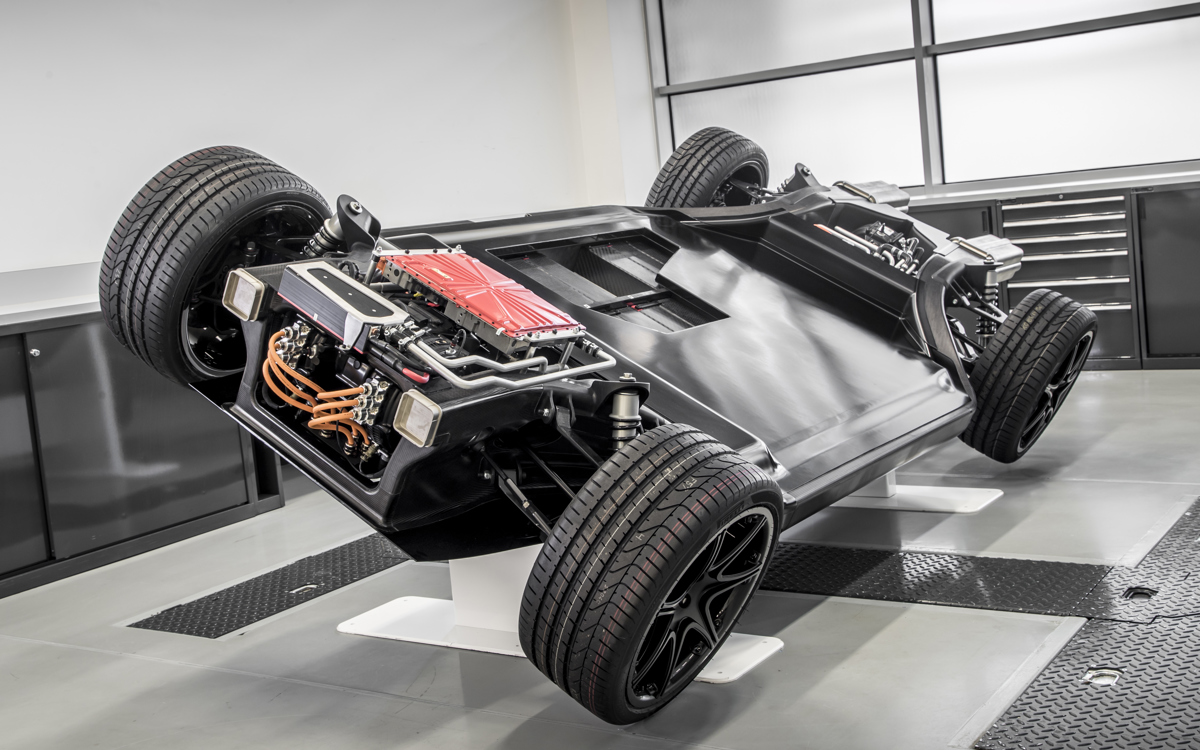
H1PERBAT
To realise the dream of truly high-performance electric vehicles, engineers are working to solve the key challenge – how to increase battery capacity, (and so boost performance or range) while maintaining safety standards, without adding weight?
H1PERBAT was a collaborative research programme, led by Williams Advanced Engineering (WAE) with the support of the Advanced Propulsion Centre, addressing this issue and exploring how to anchor this capability in the UK.
Two years on and the consortium has developed a novel flexible battery technology, and WAE, together with project partner Unipart Manufacturing, have established Hyperbat, a joint venture to create the UK’s largest independent vehicle battery assembly facility and supply chain for electric vehicles manufactured in the UK.
As part of the project, the National Composites Centre (NCC) worked on the design and development of a novel battery casing to be integrated into the existing Aston Martin vehicle geometry.
Battery casings are a critical safety feature in electric vehicles using lithium ion batteries. In addition to meeting the ‘strong yet light’ criteria, the casing must withstand extremes of heat and in doing so, contain a potential thermal hazard, whilst not impacting the performance of the vehicle. Composites provided the ideal solution.

Part of the project focused on delivering a battery casing based on the Aston Martin Rapide E platform as a demonstrator, but also widening out to look at future-proofing battery case design and manufacturing processes that could be applicable across all electric vehicle platforms.
Of course, ‘composite’ covers a great many materials and manufacturing routes, so NCC specialists investigated a wide range of different options that would support the fire resistance and electromagnetic shielding case requirements. The team also needed to work with complex design geometries, as the space for the battery box on the test vehicle platform was especially tight.
For the wider future-proofing project, the designs also had to lend themselves to higher rate manufacturing (around a few thousand parts per year) so a production version could be made easily, and at minimum cost.
In the course of its research, the NCC team created composite battery case design guidelines, comprehensive cost modelling, and manufactured a series of demonstrators using different materials and processes including both carbon fibre and bio-based composite materials.
The team proved it could deliver up to a 50% reduction in battery case costs (depending on the manufacturing rate), using methods such as resin transfer moulding whereby the manufacturer presses the dry fibre, and injects the resin themselves, rather than purchasing pre-impregnated fibre.
The team also trialled a wet compression process. The tooling for wet compression can be more expensive, but the NCC team were able to demonstrate that at relatively low rates, (anything above 100 parts per year), wet compression was a viable, low cost alternative to purchasing pre-impregnated materials.
WAE also tasked the NCC team with exploring potential end-of-life applications for the battery boxes. Legislation currently requires manufacturers to produce cars that enable 85% of the vehicle’s mass to be recycled. NCC specialists were able to draw on their knowledge and experience of working on carbon-fibre recycling with UK based ELG Carbon, the only company in the world currently able to recycle carbon fibre composites. Together they were able to repurpose 65% of the carbon fibre from a Rapid E case and produce a new case collating a comprehensive data set for the future manufacture of battery cases using a recycled carbon fibre reinforcement.
To find out more about the different battery case demonstrators developed by the NCC, click here.

